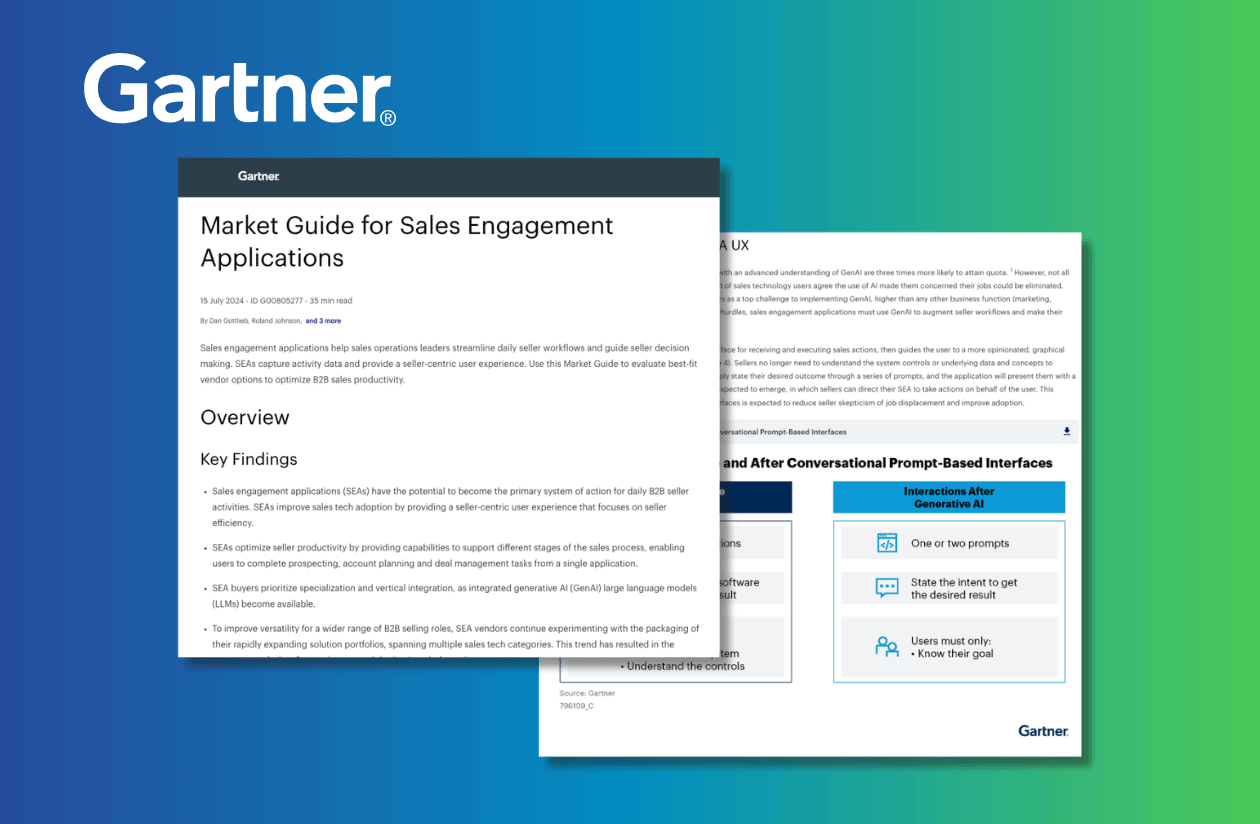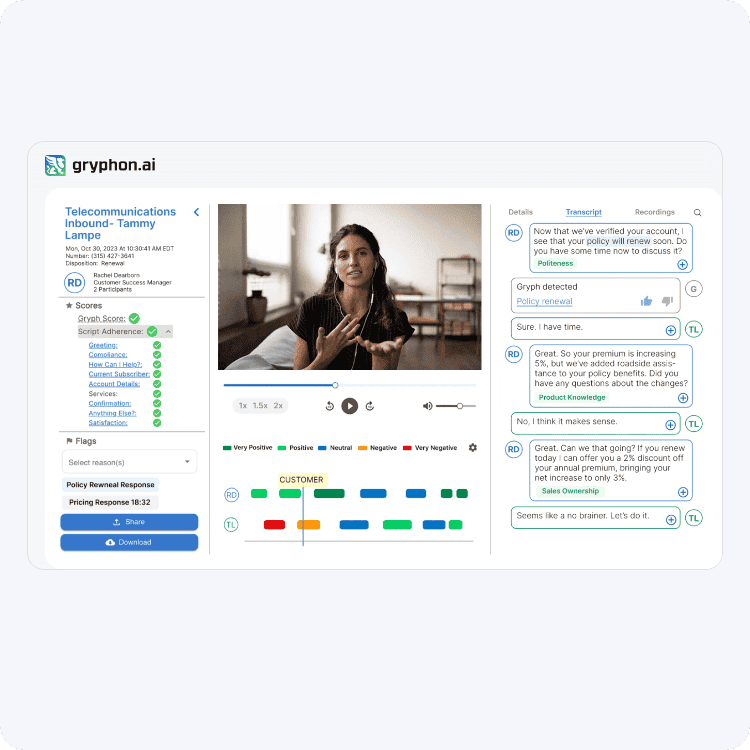Gryphon ONE for Sales
In a competitive sales environment, maximizing audience reach and expanding revenue opportunities are essential. An AI-optimized platform streamlines engagement, enhances lead generation and conversion, and supports compliant, effective interactions.

Gryphon named in the 2024 Gartner® Market Guide for Sales Engagement Applications
Optimize sales productivity and elevate your strategy with Sales Engagement Applications. Download a complimentary copy of the Gartner® Market Guide to learn how Sales Engagement Applications make sellers' lives easier by streamlining workflows and guiding decisions.
Download Report
Benefits
Leverage automated compliance safeguards and real-time monitoring to drive revenue while mitigating risk with conversation intelligence for sales teams.
Sales Use Cases

Expand Contact Reach and Sales Effectiveness
Ensure compliant outreach while maximizing engagement and conversions.
- Legal Compliance Assurance: Adhere to regulations including call frequency limits, curfews, wireless restrictions, and consumer opt-outs to enhance DNC sales practices.
- Data Integrity & Opportunity Retention: Block non-compliant communications while preserving records, ensuring sales teams can re-engage contacts appropriately.
- Streamlined Sales Processes: Automate compliance to remove barriers, allowing reps to focus on relationship-building and deal-closing with our conversation intelligence solution.

Enhance Sales Coaching and Enablement
Leverage AI-driven sales insights to improve performance and accelerate training.
- Accelerated Onboarding: Reduce training time and enable new sales reps to engage prospects like experienced professionals, shortening time-to-revenue.
- One-Call Close Optimization: Improve first-contact conversions with AI-powered objection handling and competitive counter-strategies.
- Actionable Coaching Insights: Identify improvement areas with AI-driven analytics and scoring, allowing managers to provide targeted coaching without manually reviewing every call.

Empower Real-Time Sales Interactions
Equip sales teams with real-time intelligence to drive conversations forward.
- AI-Powered Conversation Intelligence: Help reps handle objections, counter competitive offers, and personalize interactions dynamically for higher close rates.
- Seamless CRM & Dialer Integration: Work within existing workflows by integrating Gryphon ONE with current CRM and dialer solutions for faster ROI.
- Technology Enhancement, Not Replacement: Augment existing systems rather than compete with them, ensuring faster adoption and efficient workflows.